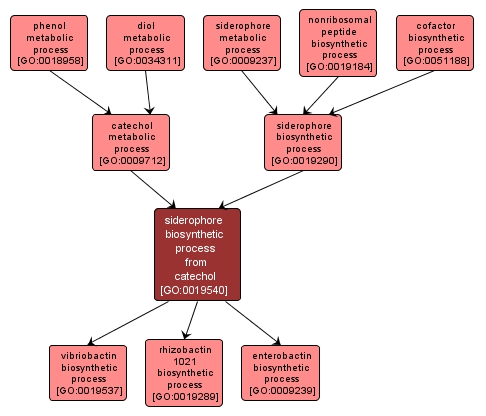GO TERM SUMMARY
|
| Name: |
siderophore biosynthetic process from catechol |
| Acc: |
GO:0019540 |
| Aspect: |
Biological Process |
| Desc: |
The chemical reactions and pathways resulting in the formation of a siderophore from other compounds, including catechol. |
Synonyms:
- siderochrome biosynthesis from catechol
- siderophore anabolism from catechol
- GO:0031190
- siderochrome biosynthetic process from catechol
- siderophore biosynthetic process from catechol, peptide formation
- siderophore synthesis from catechol
- GO:0031189
- siderophore biosynthetic process from catechol, peptide modification
- siderophore formation from catechol
|
|

|
INTERACTIVE GO GRAPH
|














